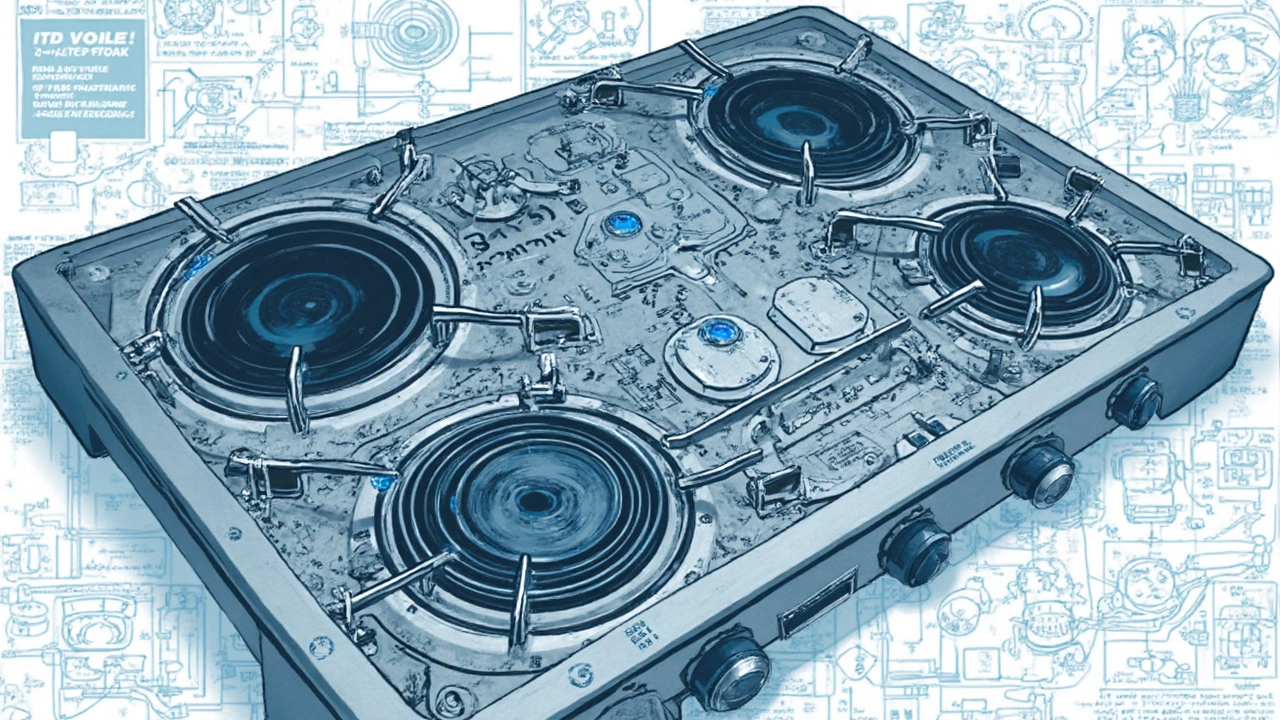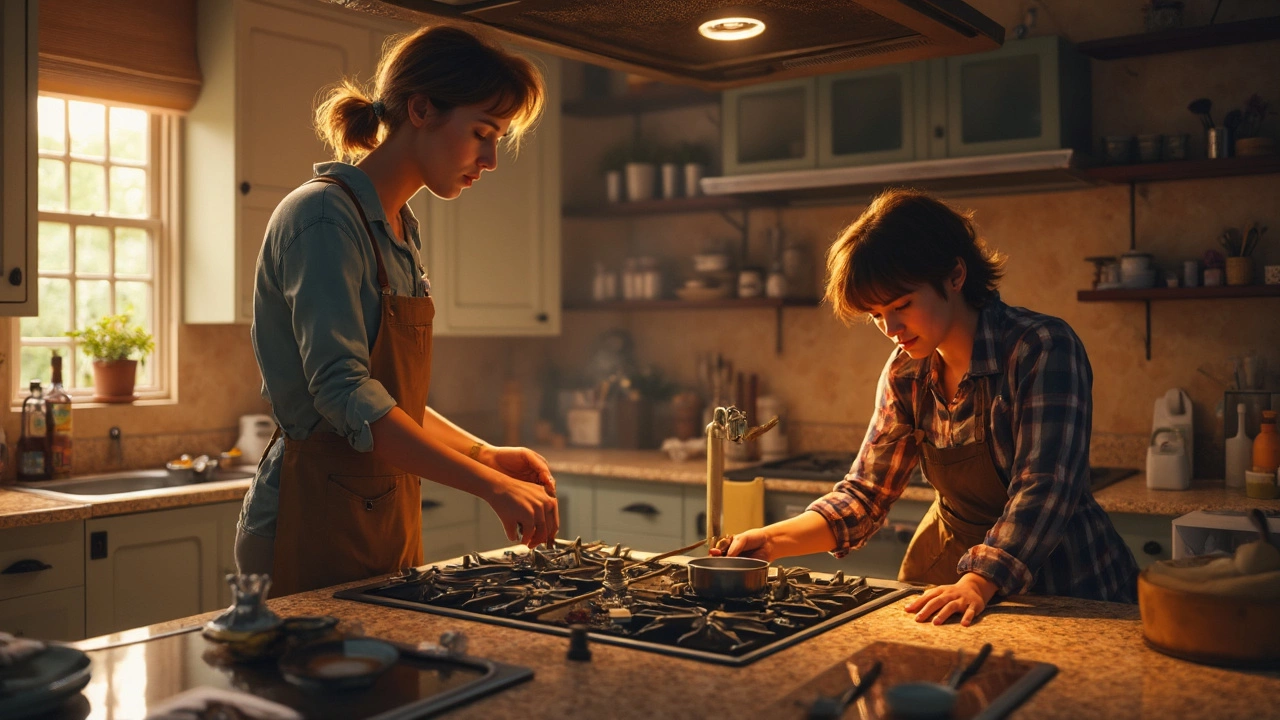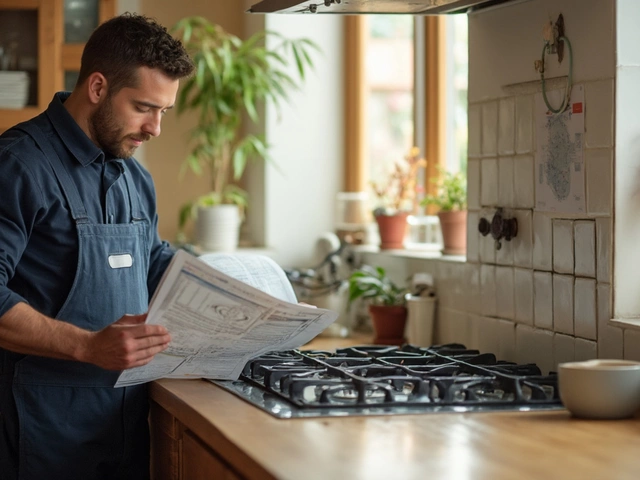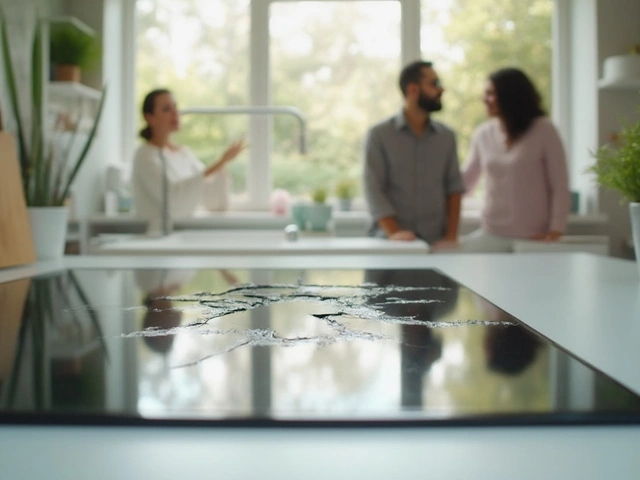So, you're standing in the kitchen, about to whip up a delicious meal, and your hob decides to play up. Sounds familiar? Well, a hob is truly the unsung hero of many kitchens, and keeping it in good shape is vital.
A hob, simply put, is the cooking top of any stove, where you'll find burners or induction coils. They're either gas, electric or induction, each having their quirks. But what happens when your trusty kitchen companion starts acting up?
Understanding the basics might save you from some headaches. Whether it's a gas hob that won't ignite or an electric one that won't stop clicking, there are always telltale signs and solutions.
But before you grab that wrench or call in a professional, let's get real: sometimes the solution is simple enough for a DIY fix. We'll dive into some straightforward tips next, so don't reach for the takeaway menu just yet!
- What Exactly is a Hob?
- Common Hob Problems
- DIY Troubleshooting Tips
- When to Call a Professional
- Extending Your Hob's Lifespan
- Regular Maintenance Checklist
What Exactly is a Hob?
Hobs are the heart of our kitchens, the trusty surfaces where meals come to life. But what exactly goes into these everyday heroes? Simply put, a hob is the flat cooking surface that you'll find on most stoves. They can be gas, electric, or even induction, and each type has its unique features and benefits.
Types of Hobs
- Gas Hobs: These are the traditional option. They're loved by many chefs for instant heat control and versatility. The flame is visible, which helps in adjusting heat levels with ease.
- Electric Hobs: These come with either smooth ceramic or solid plates. They're easy to clean and provide a steady heat source, although not as instant as gas.
- Induction Hobs: These use electromagnetic technology, offering a modern twist. They heat the pan directly, so they're ultra-efficient and quick. But they do need compatible cookware.
Features to Know
When it comes to buying or repairing your hob, knowing its parts can come in handy. Here's a quick breakdown:
- Burners or Zones: The number varies from two to six. More burners mean more cooking space!
- Knobs or Controls: These adjust the temperature. Some modern hobs use touch controls.
- Safety Features: Many hobs have built-in safety like auto-shut off when a pan's removed.
Hob Facts
Did you know? Induction hobs are about 60% more efficient than gas hobs. Plus, they're cooler to cook on—literally! This precise heat generation also helps prevent food spills from burning onto surfaces.
Now, understanding your hob and how it functions is half the battle in maintaining it. Knowing what type you have and its specific needs helps you troubleshoot issues more effectively. Ready to tackle some common problems? Let's move on to those next!
Common Hob Problems
Let's be honest, hobs are a staple in most kitchens and when they malfunction, it's more than just a little inconvenient. But the good news? Most of the time, the problems are easy to identify and even easier to fix.
Gas Hob Issues
Gas hobs are popular, but they come with their own set of quirks. One common issue is the burners not igniting. Check if gas is coming out by turning on another burner. No luck? It might be a gas supply issue or a simple blockage in the burner.
- Dirty Igniters: Sometimes, all that's needed is a clean igniter. Grease and food debris can clog the area around the igniter. Give it a clean with a gentle brush or a toothpick.
- Clicking Sound: If there's a constant clicking sound, you might have a moisture problem. Drying the area with a soft cloth can often solve it.
Electric Hob Concerns
If you're using an electric hob, you might face a different set of issues. Is one of the burners not heating? This could be a faulty element or a connection issue. Make sure the hob is off and inspect the connections before replacing any components.
- Overheating: Overheating can occur if the hob is left on for too long. Check if the control knobs are functioning correctly and replace if necessary.
- Control Issues: Sometimes the knobs or touchpad can malfunction from wear and tear. Adjustments or replacements could be in order depending on the severity.
Induction Hob Troubles
Induction hobs are the new tech marvels but aren't immune to problems. If the hob isn’t recognizing your pan, it could be because the pan isn't induction-compatible. Make sure your cookware is suitable.
- Temperature Fluctuations: Sudden temperature changes could be due to the settings or the hob's sensitivity. Adjusting your cooking settings might do the trick.
- Error Codes: These hobs often have error code systems to signal problems. Consult your manual as these codes can be a real lifesaver in troubleshooting.
Hob issues might seem daunting, but once you know what you're dealing with, the solution might be right under your nose—or your hob!
DIY Troubleshooting Tips
Alright, you're ready to roll up your sleeves and tackle some hob issues yourself. No worries, it’s not rocket science and can save you a few quid. Here's a lowdown on some common problems and how you might handle them.
Gas Hob Won't Ignite
If pressing the ignition button just isn't sparking joy, or fire for that matter, here’s what you can do:
- First off, ensure the gas supply is active. Sounds obvious but you'd be surprised how often this is the culprit.
- Check if the burners are clogged. Residue from cooked food often blocks the flow of gas. Just give them a good clean with a pin or a stiff brush.
- Inspect the ignition switch. If it's clicking away but not lighting, you might need to tighten some fittings.
Electric Hob Not Heating
So, you’ve turned the knob, but the pan stays cold. Try these fixes:
- Double-check that it’s actually plugged in and the circuit breaker hasn't tripped.
- If it’s a glass hob, look out for cracks—could be a sign you need to replace a burner element.
- If individual zones aren’t heating, swap the wires between a working and non-working zone to test the elements.
Induction Hob Problems
With all the tech, you’d think induction hobs were trouble-free. But now and again, they throw curveballs like these:
- Make sure you’re using compatible cookware. They need to be magnetic—if a magnet sticks, you're good.
- If it’s not detecting the pot, check if the hob needs a reset. Unplug for a bit and reconnect.
If you're a fan of numbers, here's how common hob issues stack up:
| Problem | Frequency (%) |
|---|---|
| Ignition Issues | 30 |
| Heating Element Failure | 25 |
| Control Malfunctions | 20 |
| Other | 25 |
For anything beyond these, don't hesitate to call a professional. Tackling gas lines or major electrical issues yourself isn't just tricky—it can be dangerous.

When to Call a Professional
Okay, you've tinkered around, and still, it’s not working? Sometimes it’s best to leave things to the pros. But how do you know when it’s time to bring in a specialist?
Signs You Need a Pro
If your hob is giving off a weird smell, that's a major red flag. A persistent gas smell, for instance, should not be ignored at any cost. It’s not just about the annoying stench—it could be dangerous too.
Next up, if your hob keeps tripping the electrics, this might suggest an internal wiring issue. This is another moment to step back and contact a professional to tackle the electrical faults.
Common Mistakes
Attempting to repair a hob without the right skills might lead to bigger issues or voided warranties. So, if your stove has gone completely cold or overly hot and is getting tricky to manage, it’s best to call in a qualified technician.
What Does the Cost Look Like?
| Service | Average Cost (GBP) |
|---|---|
| Basic Diagnostic | 50 |
| Gas Leakage Repair | 100-150 |
| Electrical Repairs | 80-120 |
Being informed about typical costs can help you budget for these emergencies. It’s always smart to get a quote before the work begins to avoid surprises.
Remember, while DIY might sound appealing, some things are best left to the experts. When your hob’s misbehaving badly, bringing in a pro ensures safety and quality repairs. Plus, you'd rather spend that time perfecting your culinary skills, right?
Extending Your Hob's Lifespan
Ever wondered how long your hob should last? On average, these kitchen workhorses can serve you for around 10 to 15 years. But, of course, you want to squeeze every last day out of that. So, how do you keep your hob running smoothly? The key lies in regular hob maintenance and a few essential practices.
Keep It Clean
First and foremost, keep your hob clean. And I mean, really clean. A build-up of grime and food particles not only looks unappealing but can also cause your hob to malfunction. Clean spills immediately, and give it a deep clean weekly or whenever you notice residue build-up. Here’s a quick cleaning routine:
- For ceramic or glass hobs, use a soft cloth and a scraper for stubborn stains.
- Gas hobs need a bit more care: clean the burners and caps separately and make sure they're dry before putting them back.
- Induction hobs are generally easier to clean but avoid abrasive cleaners.
Gentle Use
Even though your hob might seem tough, it doesn’t mean it appreciates rough handling. Tossing pans or using them aggressively can lead to surface scratches or damage.
Regular Checks
Every couple of months, inspect the hob's components. This includes gaskets for gas hobs, electrical connections for electrics, and the induction coils if you have one. Catch issues early before they become big problems. If something seems off and you're not sure how to fix it, it might be time to look into hob repair services.
Proper Ventilation
Ensure proper ventilation in your kitchen. Gas hobs need a good airflow to prevent carbon monoxide build-up, while electric and induction hobs benefit from it too. It's all about avoiding overheating and ensuring your appliance breathes easy.
Timely Repairs
Last but not least, don't procrastinate repairs. Timely attention to problems means less strain on your hob in the long run. If troubleshooting doesn't resolve the issue, don't hesitate to call in a professional for more complicated hob repairs. It might cost a bit upfront but can save money and hassle later.
These simple steps can extend the life of your hob significantly. It’s worth the effort, considering how much we rely on these reliable helpers for daily nourishment.
Regular Maintenance Checklist
Keeping your hob in top shape doesn't have to be a chore. A bit of regular maintenance can go a long way in keeping those cooking mishaps at bay. Let's dive into a straightforward checklist to ensure your hob performs like a champ every time you fire it up.
1. Daily Cleaning
Start with the basics. After every cooking session, give your hob a quick wipe down. Use a non-abrasive cleaner that won't scratch the surface.
- For gas hobs, remove the grates and clean them in soapy water. Check the burners for any food debris that could block the flame.
- Electric hobs: Make sure the rings are cool, then wipe them with a damp cloth. Avoid splashing water onto the electrical elements.
- Induction hobs: These are simpler—just wipe with a microfiber cloth to keep them looking sleek.
2. Check for Wear and Tear
At least once a month, take a closer look at your hob. Inspect the knobs and burners for signs of damage or wear.
- If you spot a worn-out knob, it's best to replace it soon. A loose or faulty knob can lead to uneven heating.
- Check hob repair guidelines for your model to handle minor issues yourself.
3. Look for Electrical or Gas Issues
If you've got an electric hob, ensure there are no frayed wires or loose connections. For gas hobs, make sure you don't smell gas when it's off—this could indicate a leak, something you want to address immediately.
4. Annual Professional Check-Up
Once a year, consider getting a professional technician to give your hob a full inspection. They'll catch problems you might miss and handle any intricate repairs.
This routine maintenance won't just help in prolonging the stovetop's life, but it'll also ensure your safety and improve performance each time you cook!




